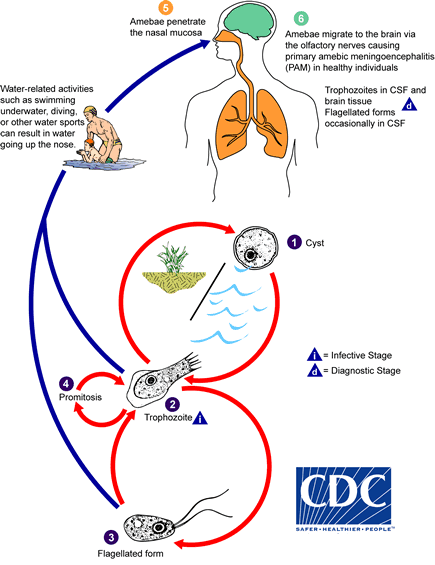LDH announced its findings on June 29. The Terrebonne Parish’s Schriever Water system and the Ouachita Parish’s North Monroe Water System were both found to have the amoeba in test samples of drinking water.
Both the water systems as well as local officials have been officially notified of the findings. Further, the water systems have been requested to convert to the free chlorine disinfection method for 60 days to ensure that the bacteria will be eliminated completely.”
Since 2015, LDH has been routinely testing for the presence of the bacteria. The most recent results were the second time the systems in question have shown traces of the amoeba.
Other systems that have tested positive in the past include the Terrebonne Parish, Ascension, and St. Bernard water systems.
However, the good news is that the amoeba cannot be contracted through drinking water, nor can it be passed from one person to another. What concerns public health officials is contaminated water entering the nose.
As such, authorities are urging the public to be very careful when it comes to swimming in fresh water, or even just washing your face with contaminated water. This is especially important to remember because from the nose, the amoeba may travel up to the brain where it is able to destroy brain tissue.”
Among the precautions to be taken are supervising children during baths, lowering or walking into swimming pools instead of jumping, and allowing water to run for five minutes to clear pipes before bathing.
. . . sinus rinse solutions must only be done using boiled and cooled, sterile, or distilled water.”
By adhering to these precautions, the public can greatly reduce the risk and keep infection from these deadly amoeba a rare thing. However, the seriousness of the threat is very real.
The fatality rate for Naegleria fowleri is 97 percent, and only four people have been known to survive from the infection between 1962 and 2016.”
Public water systems are well aware of the contamination risks and routine testing will continue to keep the public safe.
Source: Tech Times
Naegleria fowleri confirmed in North Monroe & Schriever Water Systems. Water is safe to drink, but don't get in nose https://t.co/Zuun2PzZGK pic.twitter.com/YBkSqqsvRB
— LA Dept of Health (@LADeptHealth) June 29, 2017

Naegleria fowleri
